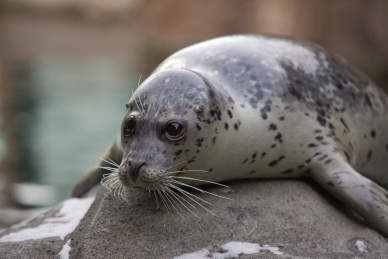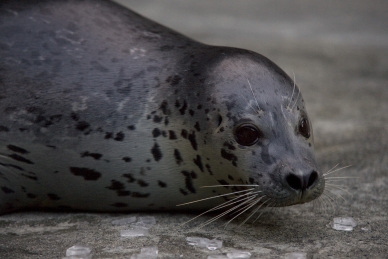Alaska Species Explorer
All
x
- – No known individuals remaining.
- – Known only to survive in captivity, or as a naturalized population outside its historic range.
- – Extremely high risk of extinction in the wild.
- – High risk of extinction in the wild.
- – High risk of endangerment in the wild.
- – Likely to become endangered in the near future.
- – Lowest risk. Does not qualify for a higher risk category. Widespread and abundant taxa are included in this category.
- – Not enough data to make an assessment of its risk of extinction.
- – Has not yet been evaluated against the criteria.
Harbor Seal
- – No known individuals remaining.
- – Known only to survive in captivity, or as a naturalized population outside its historic range.
- – Extremely high risk of extinction in the wild.
- – High risk of extinction in the wild.
- – High risk of endangerment in the wild.
- – Likely to become endangered in the near future.
- – Lowest risk. Does not qualify for a higher risk category. Widespread and abundant taxa are included in this category.
- – Not enough data to make an assessment of its risk of extinction.
- – Has not yet been evaluated against the criteria.
One of the most abundant pinnipeds in the Northern hemisphere. They have a circumpolar range. In the Atlantic Ocean they range as far south as Florida but are mostly concentrated in the north Atlantic from Greenland south to Massachusetts. In Europe they range from Norway to France. North Pacific animals can be found from California to Nome, Alaska including the Aleutian, Pribilof and Commander Islands.
Harbor seal populations are relatively stable worldwide, but have shown declines of around 80% over the past 30 years in the arctic regions. Their population in Alaska is considered depleted. The ASLC has been a part of various research projects to find answers for these declines.
Harbor seals pup at about the same time every year, between mid-May and June. The female chooses a male to mate with, and her single egg is fertilized at this time, but does not implant in the uterine wall until about three months later. This process is called delayed implantation, and allows harbor seals birth at the same time every year.
Found in both fresh and salt water environments and temperate and subarctic regions. They frequent estuaries and intertidal zones and will haul out on sandbars, rocky shores, mudflats, log rafts, piers and ice floes.
A female gives birth to one pup a year. Pups can swim very quickly after birth, grow rapidly and within about 6 weeks are usually weaned and on their own. Males and females reach sexual maturity at 3-6 years. Seals in aquariums tend to live longer lives and are documented to live into their 30’s where wild counterparts don’t live as long.
- There are six sub species of Phoca vitulina
- During the winter the blubber layer makes up 27-30% of its total body mass
- Vibrissae (whiskers) are highly sensitive and are used to navigate, hunt for prey, and detect vibrations in the water





